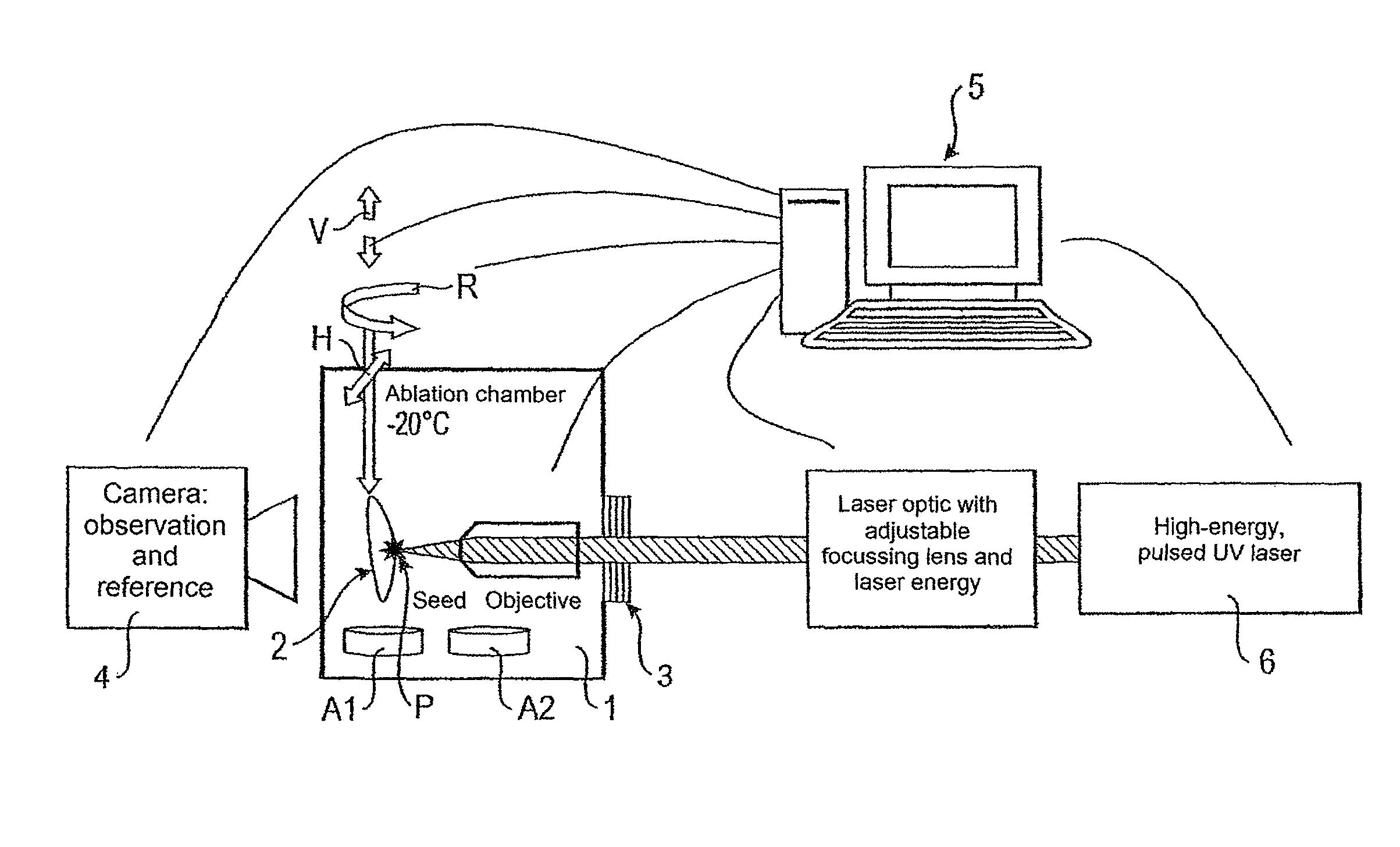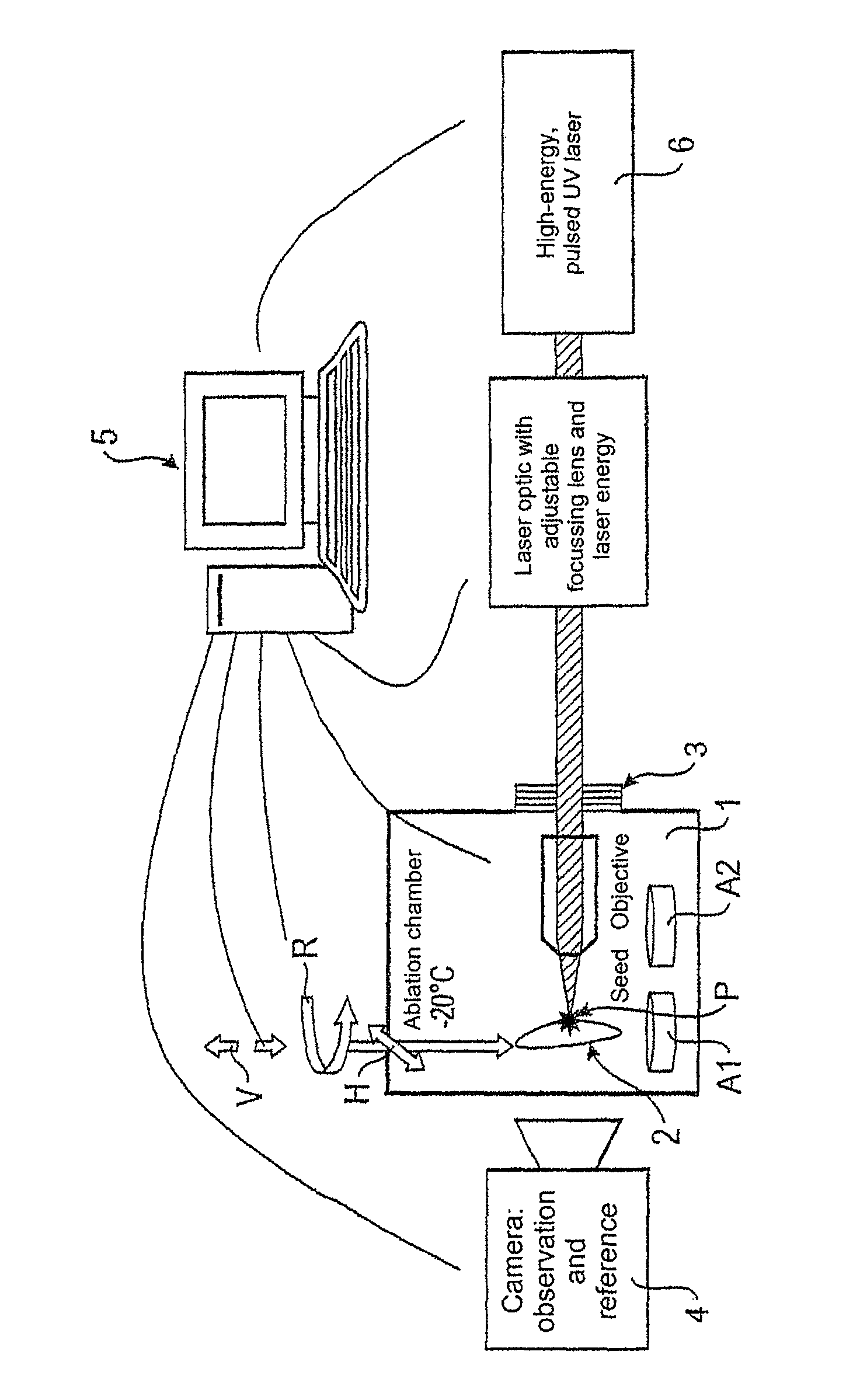Method and device for three dimensional microdissection
a three-dimensional microdissection and microdissection technology, applied in the field of three-dimensional microdissection, can solve the problems of inability to separate large volumes with correspondingly greater layer thicknesses, change and degeneration of materials, and is not possible in the known laser-based microdissection method to deep freeze samples during the entire treatment process, etc., to achieve easy and cost-effective operation, simplify the calculation of the movement sequence, and high accuracy
- Summary
- Abstract
- Description
- Claims
- Application Information
AI Technical Summary
Benefits of technology
Problems solved by technology
Method used
Image
Examples
Embodiment Construction
[0053]The FIGURE shows schematically a device for the separation of defined, three-dimensional structures from a sample according to an embodiment of the invention. The volume to be enucleated is also termed in the following as VOI (volume of interest).
[0054]In the present embodiment, a sample head with a sample 2 is located in an ablation chamber 1. Ablation chamber 1 comprises a housing in which the enucleation of defined, three-dimensional structures from the sample is performed. The sample head is disposed movably along a vertical axis V and a horizontal axis H and rotatably about a rotary axis R. Axes V and R may, as in the present embodiment, be identical. The movements of the sample head along axis V and H and about axis R are motorised by means of appropriate positioning devices which are not illustrated in the FIGURE. According to this embodiment, the sample head and the sample are movable by three degrees of freedom. The sample holder, for example, may be a mechanical hold...
PUM
| Property | Measurement | Unit |
|---|---|---|
| temperature | aaaaa | aaaaa |
| thickness | aaaaa | aaaaa |
| volume | aaaaa | aaaaa |
Abstract
Description
Claims
Application Information
 Login to View More
Login to View More - R&D
- Intellectual Property
- Life Sciences
- Materials
- Tech Scout
- Unparalleled Data Quality
- Higher Quality Content
- 60% Fewer Hallucinations
Browse by: Latest US Patents, China's latest patents, Technical Efficacy Thesaurus, Application Domain, Technology Topic, Popular Technical Reports.
© 2025 PatSnap. All rights reserved.Legal|Privacy policy|Modern Slavery Act Transparency Statement|Sitemap|About US| Contact US: help@patsnap.com


